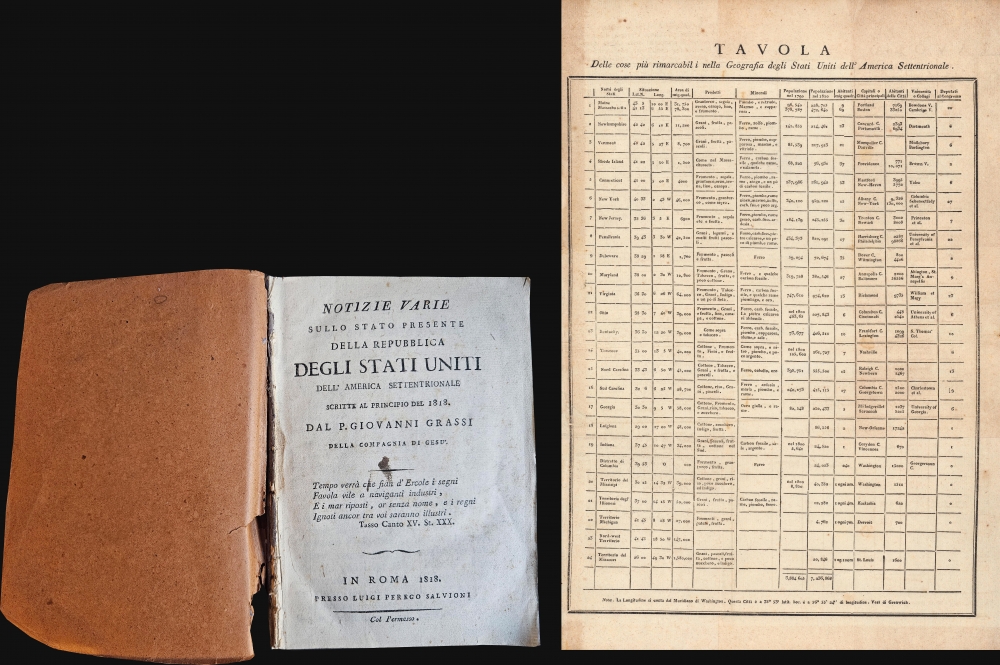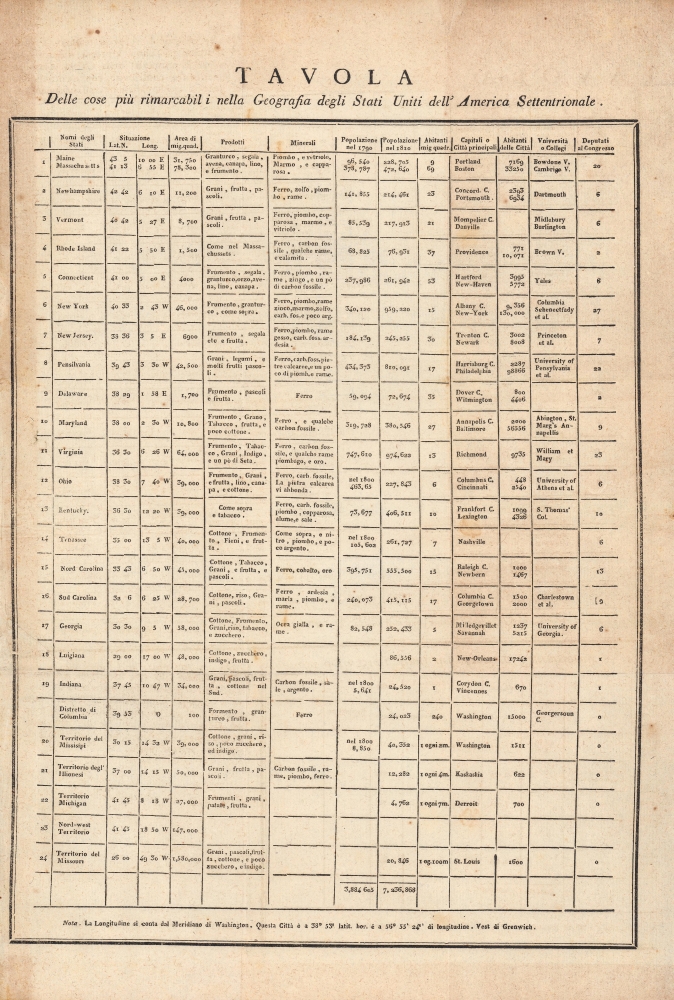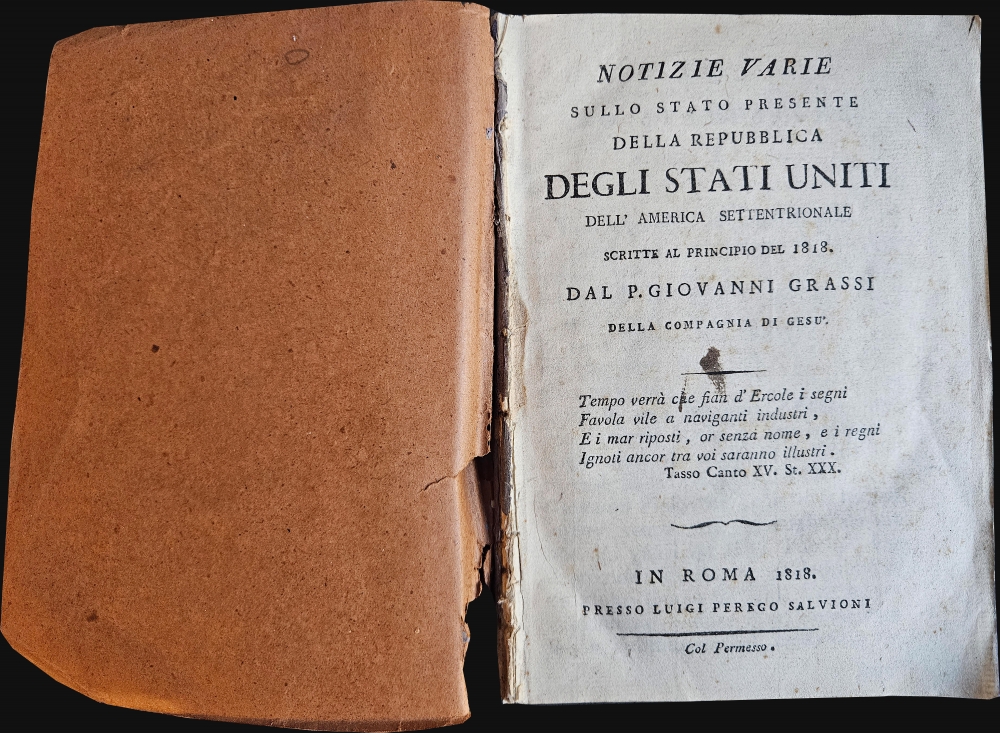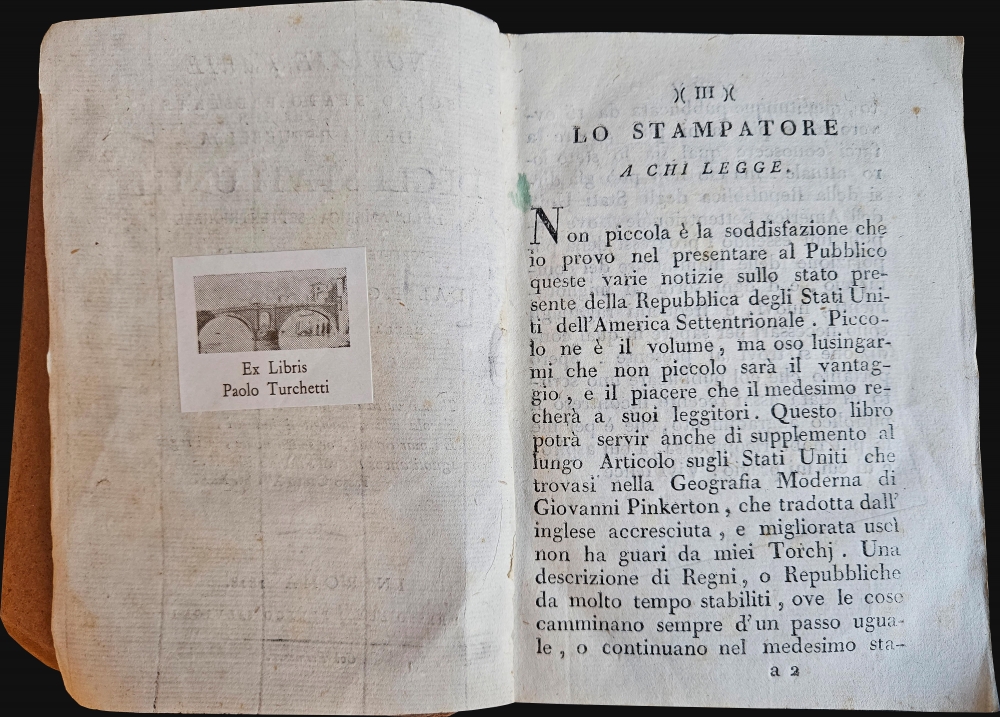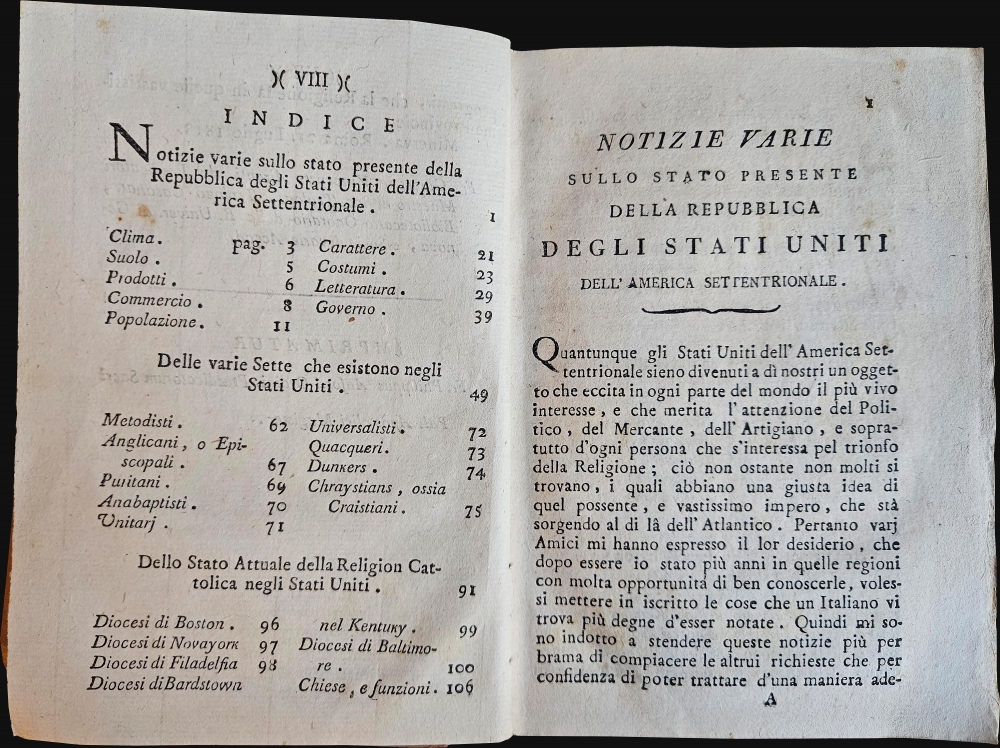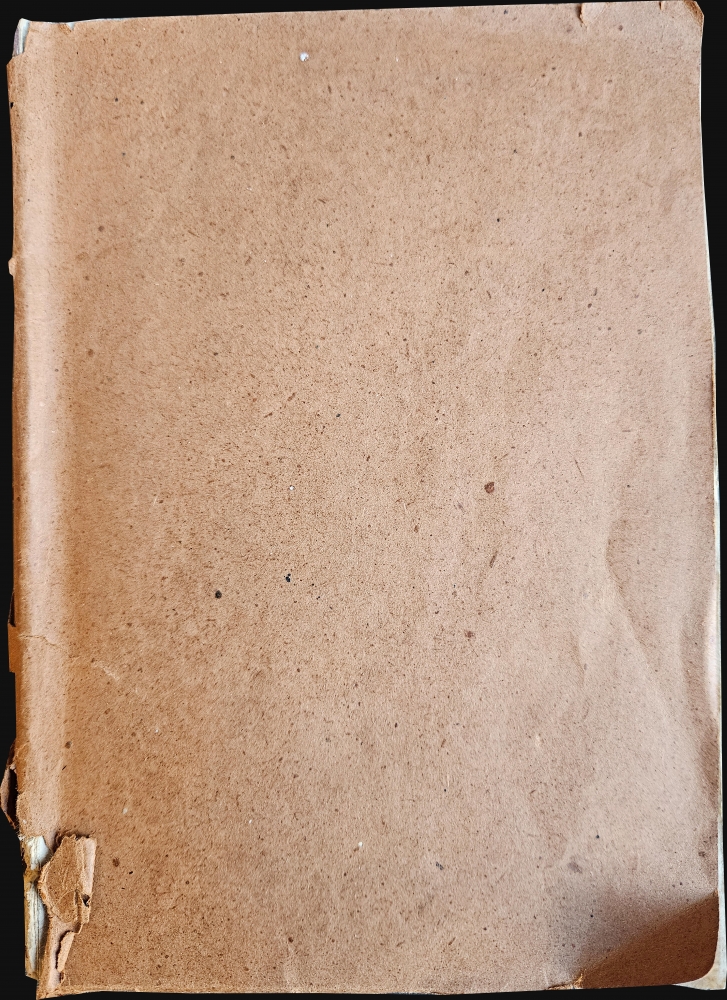Digital Image: 1818 Grassi Informational Table on the United States of America
TavolaStatiUniti-grassi-1818_d
Title
1818 (undated) 16 x 10.75 in (40.64 x 27.305 cm)
Description
FOR THE ORIGINAL ANTIQUE MAP, WITH HISTORICAL ANALYSIS, CLICK HERE.
Digital Map Information
Geographicus maintains an archive of high-resolution rare map scans. We scan our maps at 300 DPI or higher, with newer images being 600 DPI, (either TIFF or JPEG, depending on when the scan was done) which is most cases in suitable for enlargement and printing.
Delivery
Once you purchase our digital scan service, you will receive a download link via email - usually within seconds. Digital orders are delivered as ZIP files, an industry standard file compression protocol that any computer should be able to unpack. Some of our files are very large, and can take some time to download. Most files are saved into your computer's 'Downloads' folder. All delivery is electronic. No physical product is shipped.
Credit and Scope of Use
You can use your digial image any way you want! Our digital images are unrestricted by copyright and can be used, modified, and published freely. The textual description that accompanies the original antique map is not included in the sale of digital images and remains protected by copyright. That said, we put significant care and effort into scanning and editing these maps, and we’d appreciate a credit when possible. Should you wish to credit us, please use the following credit line:
Courtesy of Geographicus Rare Antique Maps (https://www.geographicus.com).
How Large Can I Print?
In general, at 300 DPI, you should at least be able to double the size of the actual image, more so with our 600 DPI images. So, if the original was 10 x 12 inches, you can print at 20 x 24 inches, without quality loss. If your display requirements can accommodate some loss in image quality, you can make it even larger. That being said, no quality of scan will allow you to blow up at 10 x 12 inch map to wall size without significant quality loss. For more information, it is best consult a printer or reprographics specialist.
Refunds
If the high resolution image you ordered is unavailable, we will fully refund your purchase. Otherwise, digital images scans are a service, not a tangible product, and cannot be returned or refunded once the download link is used.
Cartographer
Giovanni Antonio Grassi (September 10, 1775 - December 12, 1849) was an Italian Jesuit whose long sojourn in the United States included serving as the President of Georgetown College in Washington, D.C. Grassi was born in the Republic of Venice showed promise as a young student, leading to his recruitment to the Jesuit College in Polotsk (then in the Grand Duchy of Lithuania, now Belarus). He was meant to travel to China to revive the dying Jesuit mission at the Qing Court, but was unable to secure safe passage after years of effort. He then went to England and finally to the United States, where he headed the Maryland Mission of the Jesuits and served as the President of Georgetown College (later University). He is credited with overhauling the college's curriculum and administration, setting it on a path to become America's premier Catholic university. He also wrote the book Notizie varie sullo stato presente della repubblica degli Stati Uniti dell'America Settentrionale, scritte al principio del 1818, which was important for providing information on the young republic to an Italian audience (Grassi became a naturalized American citizen in 1815). During his time in the U.S., Grassi was appalled by slavery but did not endorse immediate emancipation and in his official duties oversaw slaves owned by the mission and college. Due to his success with Georgetown, Grassi was called back to Italy to lead the Pontificio Collegio Urbano de Propaganda Fide, the Holy See's institution for training missionaries. He went on to serve in various ecclesiastical and administrative roles, including as royal confessor to the king and queen of Sardinia. More by this mapmaker...

